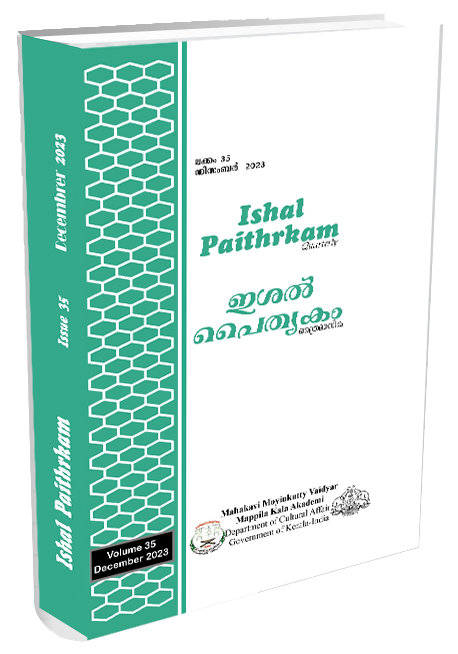The Politics of Torture in the Post September 11 Context: An Analysis of Rendition
Keywords:
September 11, Muslim Representation, Ideology, Sequence Analysis, Torture, Rendition, US Patriot ActAbstract
Movies are part of the discursive social practices that reflect the conditions and structures of society. Among the broad category of movies, popular film always remains a potent cultural artifact; the most resonant and compelling capitalist art form that enables us to know about the turbulent social and political climate of the time. No national event has been more cinematic than the planes hitting the twin towers, one after the other, their fall to rubbles in an instant on September 11, 2001. The World Trade Centre had undoubtedly been the iconic image of the New York skyline which had appeared in many Hollywood movies as the backdrop. At this outset, the paper intends to analyze the film Rendition against the background of the political zeitgeist of the time after the September 11 attack. The paper proposes to closely analyze the cinematic narrative techniques that corroborate the emotional and ideological effects of the film. The paper follows the technique of close analysis of shots and sequences. The paper attempts to address the questions like how the dominant ideology influences films, how sequence analysis and shot analysis help in bringing out the nuances of representation and the politics of torture. The paper, in short, strives to decode the political ideology inherent in films by means of the methodology of technical analysis.
Downloads
References
“Address to a Joint Session of Congress and the American People.” National Archives and Records Administration, National Archives and Records Administration, 20 Sept. 2001, georgewbush-whitehouse.archives.gov/news/releases/2001/09/20010920-8.html, accessed on 19 December 2017.
Alsultany, Evelyn. Arabs and Muslims in the Media: Race and Representation after 9/11. New York University Press, 2012.
And Then They Came for Us. Directed by Abby Ginsberg and ken Schneider, Social Action Media, 2017.
Archive, Hollywood, director. Rendition Interview. YouTube, YouTube, 30 Sept. 2014, www.youtube.com/watch?v=jP5MP0yAVEo+Sep+30%2C+2014, accessed on 02 Feb. 2017.
Bharucha, Rustom. Terror and Performance. Routledge, 2014.
Glass, Andrew. “U.S. Rescinds Internment of Japanese- Americans, Dec.17, 1944.” Politico, 16 Dec. 2016, www.politico.com/story/2016/12/us-rescinds-internment-of-japanese-americans-dec-17-1944-232630, accessed on 13 Oct 2016.
Jacobs, Ben. “Donald Trump on Waterboarding: ‘Even If It Doesn’t Work They Deserve It’.” The Guardian, 24 Nov. 2015, www.theguardian.com/us-news/2015/nov/24/donald-trump-on-waterboarding-even-if-it-doesnt-work-they-deserve-it, accessed on 12 Feb. 2016.
Kracauer, Siegfried. From Caligari to Hitler: a Psychological History of the German Film. Princeton University Press, 1974.
Kellner, Douglas. Cinema Wars: Hollywood Film and Politics in the Bush-Cheney Era. Wiley-Blackwell, 2011.
Lehnguth, Henrike. “Into the Dark Chamber of Terror: the ‘War on Terror’ in Visual Culture.” University of Maryland, 2011.
Nolan, Steve. Film, Lacan and the Subject of Religion: a Psychoanalytic Approach to Religious Film Analysis. Continuum, 2011.
Rendition. Directed by Gavin Hood, performances by Omar Metwally, Reese Witherspoon, Jake Gyllenhaal and Meryl Streep, New Line Cinema, 2007.
Sterren, Films. Rendition Interview. YouTube, YouTube, 16 Sept. 2011, www.youtube.com/watch?v=tuQ5gjrl51M, accessed on 15 Dec. 2017.
Wiener, Jon. “Teaching 9/11.” The Nation, 8 Sept. 2005, www.thenation.com/article/teaching-911/, accessed on 26 Dec 2017.
Zizek, Slavoj. “It’s Time to Be Dogmatic about Torture: Why Zero Dark Thirty Is Just Propaganda.” ABC Religion and Ethics, 29 Jan. 2013.
Zizek, Slavoj. “Zero Dark Thirty: Hollywood’s Gift to American Power.” The Guardian, 25 Jan. 2013, www.theguardian.com/commentisfree/2013/jan/25/zero-dark-thirty-normalises-torture-unjustifiable, accessed on 9 Dec. 2016.
Downloads
Published
Issue
Section
License
Copyright (c) 2025 ISHAL PAITHRKAM

This work is licensed under a Creative Commons Attribution-NoDerivatives 4.0 International License.

